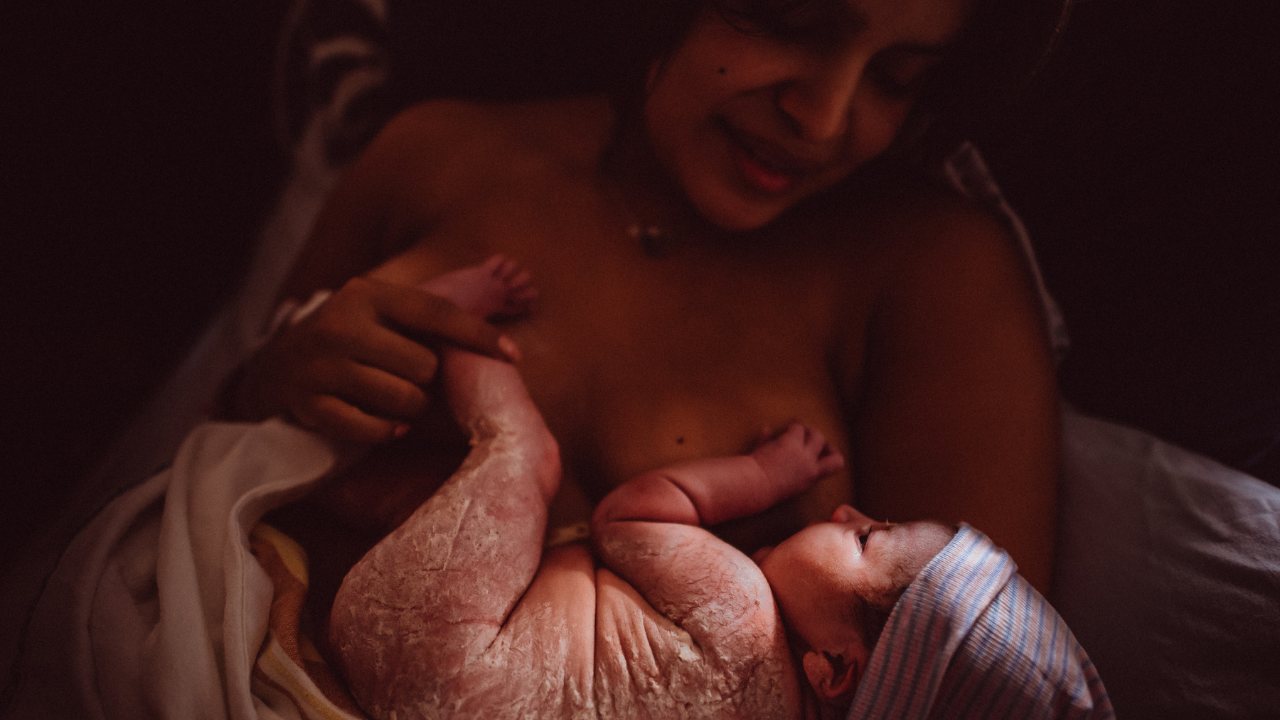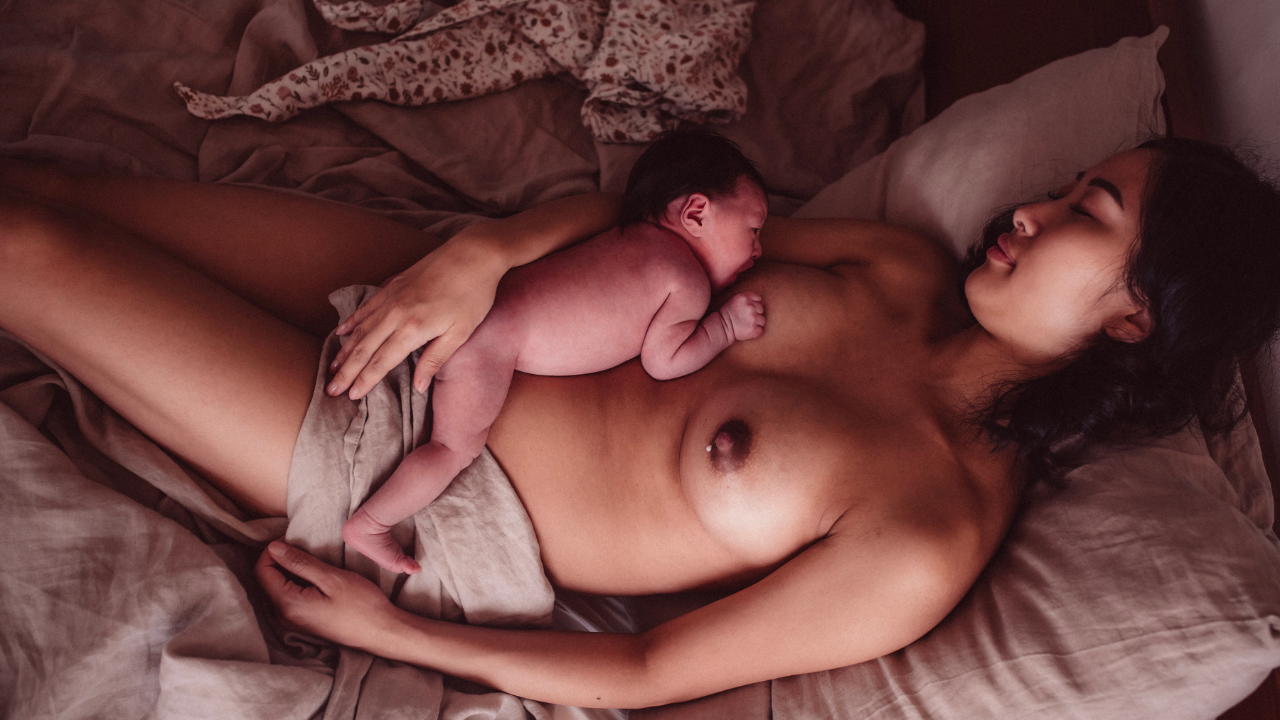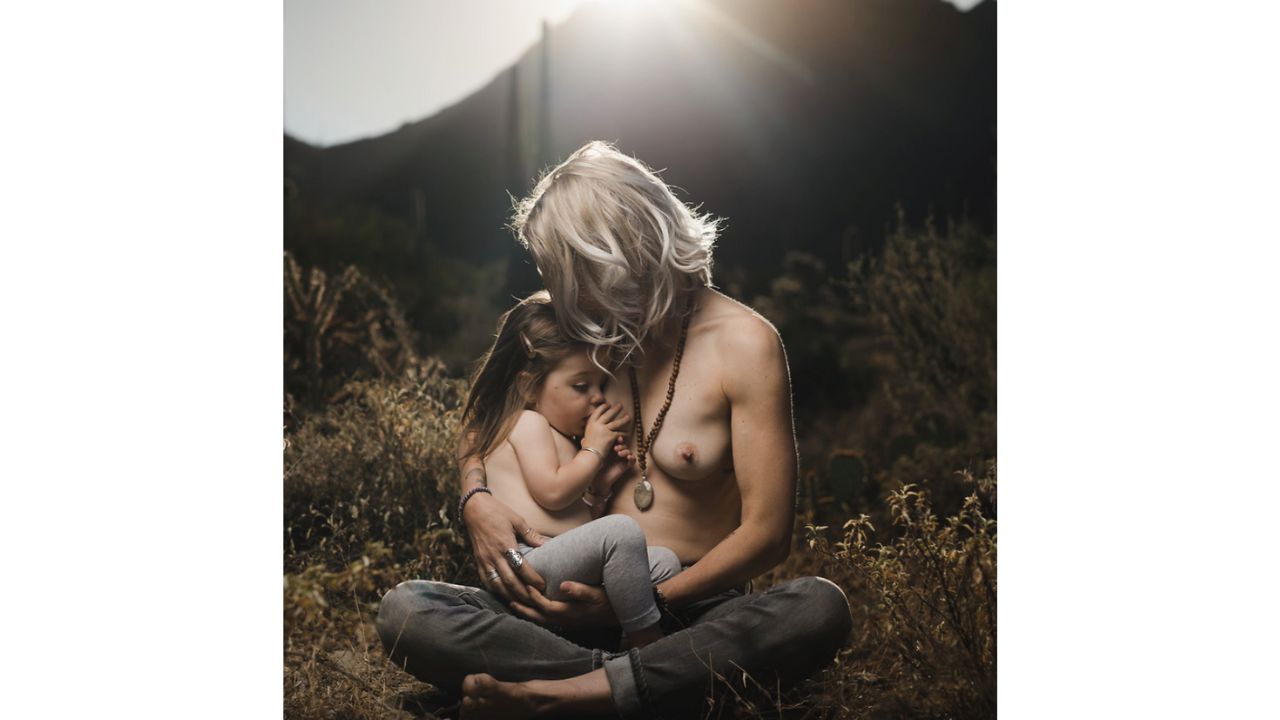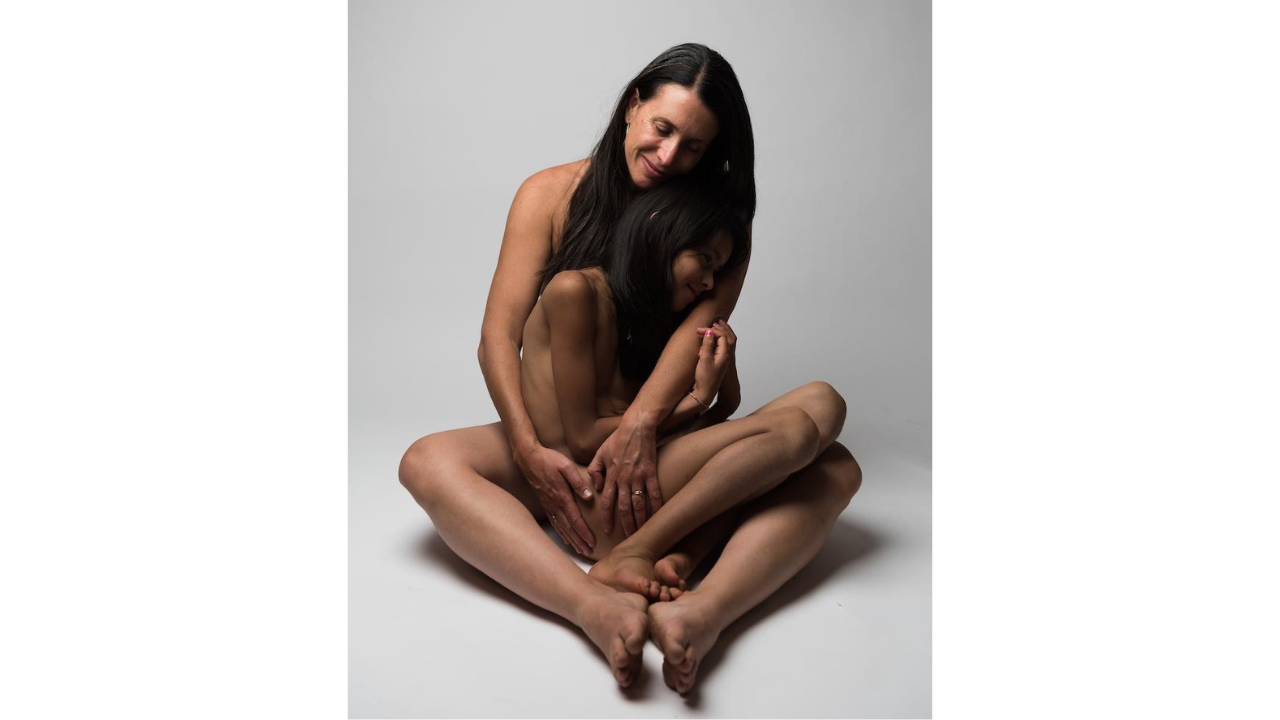How Long is Postpartum?

“Postpartum,” is a time after birth.
It is not a syndrome.
We can say that the postpartum period lasts for:
6 weeks, 9months, 3 years, 7 years, all of life.
And all of these answers are TRUE.
Women are postpartum after the birth of a live baby, and after the birth of a stillborn baby.
Women are postpartum after a miscarriage and after an abortion.
Postpartum CARE safeguards women’s health and wellness – mentally, emotionally, physically and spiritually – for LIFE.
-Rachelle Seliga, 2015
Everyone has different opinions of how long the postpartum period is. But outside of opinions of "experts" and potentially well-intentioned family members and friends - what does our physiologic design reveal to us as Truth in regards to this inquiry?
There is an initial postpartum period – which involves the first 6-12 hours after birth.
This is a time of rapid bodily change, when Mother's body begins to shift from gestation to lactation. The first hour or so after birth is often referred to as "The Golden Hour." The physiologic design of this immediate time after birth, is for Mother-baby primarily, and the rest of the immediate family secondarily – to use all of their senses to connect with each other (smell, taste, sight, sound, touch) - forming life-sustaining, life-long bonding and attachment.
When uninterrupted - these first 60 minutes or so after birth, with Mother and baby in skin-to-skin contact, allows baby to initiate all of their incredible, natural reflexes, enabling them to move on their own towards Mother's breast, latch on, and nurse.
When there is skin-to-skin contact in this initial postpartum period, stress hormones are reduced in Mother-baby and Father, and relaxation / feel good hormones rise. These first hours after birth are a time of deep integration and tender vulnerability.

Many people refer to "6-weeks" as THE postpartum period. And this is absolutely a partial truth.
Because during the first (approximately) 6-weeks after birth, a woman's body is going through massive changes, *beginning* to heal from pregnancy and birth, while her baby is going through massive changes from intrauterine to terrestrial Life.
During this phase of the postpartum time the Mother’s body undergoes major changes in:
- Hemodynamics (blood volume regulation)
- Uterus involution - the uterus returning to a non-pregnant size (having grown from approximately 4 oz to approximately 1.5-2lbs)
- Abdominal organs are accommodating within the abdominal cavity - after having been rearranged during pregnancy
- Digestive "fires" BEGIN to return during this six week mark (labor and birth "extinguish" our digestive fires - meaning lower our hydrochloric acid, beneficial bacteria, enzymatic output and more. With right food in this first 6 weeks of the postpartum period, these digestive fires get sparked anew).
- Metabolism
- Hormones
- Lactation; baby's lifeline
- Learning to operate in the world as a dyad with her baby to name a few.
This period of time is called many things in many different postpartum traditions, such as "The Sacred Window," in Ayurvedic Medicine, and a "Golden Opportunity" in Chinese medicine. BECAUSE - if a woman is properly cared for during this 6-week period of time after birth, she has the possibility to regenerate - and emerge from this time healthier than at the start of her pregnancy.
WHY is this so / how is this possible?
Because the period of time after birth is a whole-body reset / recalibration.
Women’s postpartum body will either be recalibrated to health and wellness with appropriate foods, rest and loving care – or – to dis-ease and degeneration within inappropriate foods, lack of rest and loneliness. (1)
Postpartum traditions from around the world acknowledge a "postpartum period" of 21-60 days, where in-depth, daily protocols are followed. This time period of 21-60 days is approximately the amount of time it takes to create new habits. And new habits are formed most easily when they are enjoyable. When postpartum Mothers receive consistent, physiologically appropriate, enjoyable care throughout the first 6 weeks postpartum - new habits that HONOR SELF are formed.
The softening that is present in postpartum Mothers’ bodies at this time - creates physical vulnerability. Physical vulnerability creates emotional vulnerability. Here in these soft, vulnerable places there is potential for profound individual, familial and ancestral HEALING.
This potential, this opportunity to HEAL on all levels in the postpartum time - is facilitated through the container of community.
Also important to note is that – it is during the first 6-weeks after birth when most postpartum "crises" occur - such as postpartum hemorrhage, eclampsia, Venous thromboembolism and on.

We could say that "postpartum" lasts 6-9 months - and this is also completely True.
As humans, we have a period of intragestation (what we commonly know as "pregnancy") and we have a period of exogestation (less commonly known).
Exogestation is the language that acknowledges the fact that: Our human babies have many traits likened to that of baby marsupials, that finish growing and developing outside of the womb. Human babies are born 100% dependent on CO-REGULATION with their Mother until they are between 6-9 months old.
This is not an endearing ‘idea,’ nor a debatable moral ‘concept.’
This is the Truth that Mothers’ bodies regulate their babies’: temperature, respiration, cardiovascular system, hormonal system and more.
It is both crawling and the attainment of about 50% of the adult brain volume, that indicates exogestation is complete. This typically happens between 6-9 months after birth. (2)
AS WELL: Uterine ligaments are pulled to their maximum capacity through pregnancy, labor and birth; similar to regular, first-degree musculoskeletal strain. Ligaments are AVASCULAR, and are very SLOW TO HEAL. With proper rest and nourishment, by 6-9 months postpartum we could assume that uterine ligaments have (mostly) healed from pregnancy and birth.

We could also say that postpartum lasts 3 years.
Babies brains have grown from 25% adult brain volume at birth to 90% adult brain volume by the time they're 3 years old. From 0-3 years old, 1 million neural connections are made per second! (3)
While YES our babies brains and nervous systems are formed through nutrient dense breast milk (formed by a maternal diet of nutrient dense food), these neural connections, this brain growth happens BY AND THROUGH relationships with Mother, Father, Primary care givers; it happens IN CONNECTION with other humans.
Humans' brains develop more at THIS TIME - than any other time in Life. It is from birth to three years old, that humans develop the BODILY beliefs of: Am I safe? Am I safe in relationship? Do I belong here (on Earth)? It is the time that our core BELIEFS about Life are shaped. THIS is how important the first three years of our babies’ lives are.
“The hand that rocks the cradle is the hand that rules the world” alludes to the reality that: Whoever is taking care of our babies, is who will ‘rule the world,’ through the imprint / effect the adults have on our babies. The physiologic design is for MOTHERS, Fathers and our closest, most trusted peoples to be these ones.
ALSO: It takes approximately 3 years to REBUILD nutrient and mineral stores that were depleted during pregnancy, including Vitamins A, D, E and K, Zinc, Copper, Calcium, Magnesium, B-vitamins, amongst others. Many traditional cultures recommend ideal child spacing being 3 years, so that Mothers can grow human LIFE without depleting themselves, and recuperate their strength completely. (4)
ALSO: On average, pregnant women have 10 times the amount of the hormone Relaxin in their bodies, then non-pregnant women. Relaxin relaxes and softens all the body's connective tissue, ligaments and tendons from thumb joints to the hips - to allow for the expansion of pregnancy. After birth, Relaxin continues to have this ‘relaxing’ effect on Mother’s connective tissues through the time that she is breastfeeding. (Mothers also have high levels of Prolactin and Oxytocin, and lowered levels of Progesterone and Estrogen in our bodies through the time we are breastfeeding). The global average for breastfeeding is 3-4 years. Meaning: Women’s’ bodies are in altered, POSTPARTUM states through the time we are breastfeeding.

We can also say that Mothers are postpartum for 7 years:
Children live primarily in theta and delta brain wave states – for the first 7 years of life. What this means is that: Children are living in hypnotic states, from 0-7 years old, being subconsciously programmed by their environments. (5)
Another way to state the same, comes from the teachings of Rudolph Steiner, specifically from his body of work known as the The Kingdom of Childhood:
The whole being of a child from 0-7 years old, is a great “sense organ.” While adults are able to shut out the sense impressions of the eyes and ears; and in some manner ward off, choose and discriminate among the bombardment of stimuli, children from 0-7 years old are so delicately sensitive to the surrounding environment - that the sense impressions work right into the very physiology of their being.
For the first 7 years of life, children learn entirely through imitating their environment, and the adults around them. In our blueprint as human beings, adults are meant to be models worthy of imitation.
Additionally, human beings go through one of life’s big transformational processes during our seventh year of life. While each body part has its own distinct cellular lifespan (the lining of the stomach renewing every few days, and neurons in the cerebral cortex that stay with us from birth to death), the vast majority of our body renews all of its cells every 7 years.
This means that a seven year-old child is not the same child (physically speaking) that was carried in his or her Mother’s womb. The inherited body is outgrown, and the child has renewed his whole organism.
The future development of each individual child and of humanity as a whole, depends on the health-giving experiences in the first seven years of life.
The adults who by biological design hold the “charge” for this development in the children, are the Mothers; through Mothers being present with her children AND by Mothers deciding who is allowed to be present with her children.

AND, we can say that postpartum is FOR LIFE….
Because we are forever and permanently changed as women when we become MOTHERS – on all levels: mentally, emotionally, physically and spiritually:
- Fetal cell microchimerism or fetal chimerism – is when cells from a fetus pass through the placenta and establish cell lineages within the Mother. Fetal cells have been documented to persist and multiply in the mother for several decades (6)
- Mothers brains are rewired and change shape (grow grey matter), as we care for our babies. Grey matter helps the brain process sensory information, signaling nerve cells to respond, helping us to make decisions and respond to the world around us. Brain changes are associated with relativity of mother-to-infant attachment. (7)
- The shape of our cervix and the contours of our vulvas and vaginas shift after labor and vaginal birth; scars from c-sections, tearing and episiotomies permanently mark our bodies’ territory; stretchmarks forever etched into where we expanded to carry life; our bony architecture marked as Mother.
- Our pregnancies are times of gestating not only our babies, but also ourselves. When we birth our babies, we birth ourselves. When our babies are newborns, we are newly born Women. After carrying life in our wombs – we will NEVER be oriented to life in the way we were prior. We walk forward in life in the heartbreaking tenderness, vulnerability, ferocity and Love, that is MOTHER.
Rachelle Seliga ©
Registration is openclosed for the only INNATE Postpartum Care – Certification Training of 2023-24. Click HERE to join the Waitlist
Click HERE to receive a free class: Physiologic Postpartum Care - Re-membering Our Global Postpartum Tradition
(1) Social-connection-graphic-comparison
(2) Human Birth: An Evolutionary Perspective by Wenda Trevathan
(3) Center on the Developing Child Harvard University
(4) The Weston A Price Foundation
(5) Work of Bruce Lipton
(6) https://www.waldorflibrary.org/articles/1240-six-an-important-year

